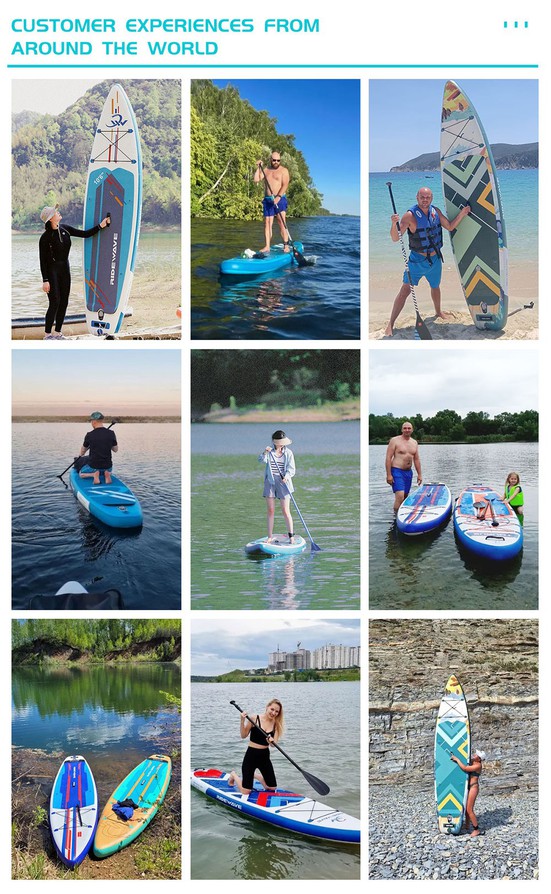Why 2025 Is The Perfect Year To Start Your Paddle Board Brand
Jun 17, 2025
Leave a message
Have you ever dreamed of starting your own SUP paddle board brand? If yes, 2025 might be your perfect year to begin. From booming market demand to advanced manufacturing technologies and global digital marketing tools, all signs point to this year as a golden opportunity. The combination of lower startup costs, accessible international suppliers, and more powerful marketing channels makes 2025 the most strategic time to step into the industry.
This blog will explore why 2025 is the perfect year to start your paddle board brand, diving into market trends, technology innovations, supply chain stability, and marketing tools. You will also learn how Ridewave, a leading SUP manufacturer with over a decade of experience, can support your journey from idea to reality.
Market Trends: Why 2025 Is the Perfect Year to Start Your Paddle Board Brand
The global stand-up paddle board (SUP) market has grown rapidly over the past five years, and in 2025 it's expected to reach new heights. More people around the world are embracing outdoor water sports for fitness, adventure, and mental well-being.
According to multiple industry reports, the SUP market is projected to grow at a compound annual growth rate (CAGR) of over 8% from 2024 to 2030. In North America and Europe, paddle boarding has become a top recreational activity, while countries in Asia and Latin America are rapidly catching up thanks to urban waterfront development and rising disposable incomes.
Three strong macro trends are driving demand:
Health and wellness boom: Consumers are prioritizing activities that combine physical fitness and mindfulness. SUP fits perfectly, offering low-impact exercise and peaceful nature immersion.
Post-pandemic outdoor revival: After years of indoor restrictions, consumers are increasingly choosing safe, open-air leisure options. Paddle boarding is an ideal activity for families, solo travelers, and tour groups.
Sustainability awareness: As more consumers favor eco-friendly sports, paddle boards made with recyclable materials or durable designs have become more popular.
With this strong momentum, it's easier than ever to enter the market with a fresh, niche-focused brand. Whether you want to target yoga practitioners, eco-conscious paddlers, fishing enthusiasts, or even pet-friendly boards, there's ample room for innovation.
Ridewave Tip: Ridewave supports new brands with flexible minimum order quantities (as low as 50 boards) and OEM/ODM solutions tailored for niche markets. You can start small and scale quickly based on real-time market feedback.
Supply Chain: Why 2025 Is the Perfect Year to Start Your Paddle Board Brand
Starting a product-based business used to mean complex logistics and high entry barriers. But in 2025, the paddle board supply chain has become more accessible, transparent, and reliable-especially when working with experienced OEM factories like Ridewave in China.
Here's what's improved in the supply chain landscape:
Stable material supply: Post-2023, the availability of drop-stitch fabrics, EVA pads, and PVC materials has normalized. Costs are more predictable, reducing risk for new brands.
Faster delivery times: International shipping is more efficient, with improved container access and fewer port delays. Ridewave offers fast lead times of 25-35 days even during peak seasons.
Stronger quality assurance: Leading manufacturers have implemented comprehensive SOPs (standard operating procedures). At Ridewave, each board goes through 100% QC inspection before shipping.
Better communication: Real-time order tracking, live factory video calls, and cloud-based design approvals make it easier to manage production from anywhere in the world.
For entrepreneurs, this means less stress and more control. You can focus on building your brand while trusting that your production partner delivers.
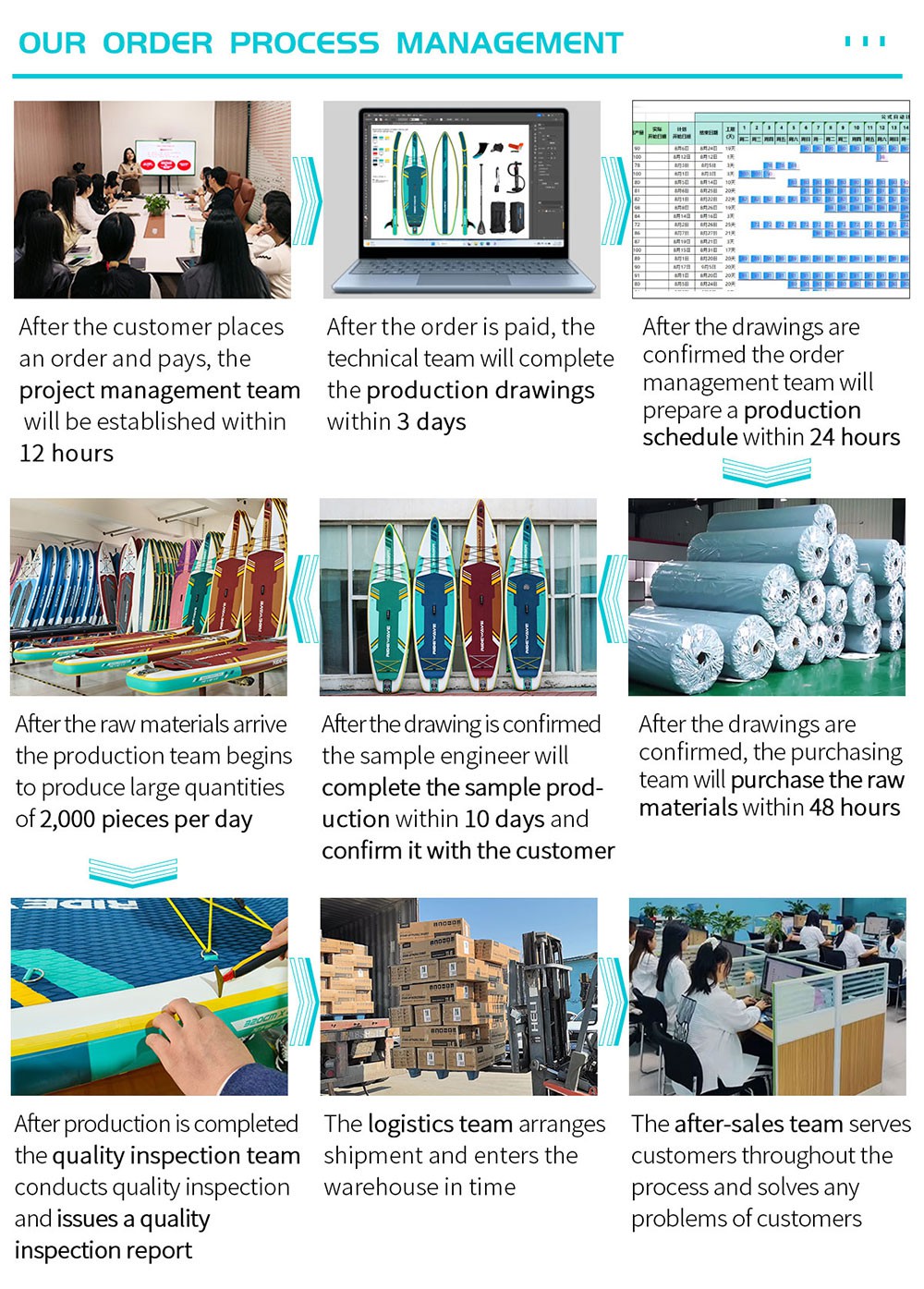
Technology: Why 2025 Is the Perfect Year to Start Your Paddle Board Brand
Advanced technology in both board construction and digital design tools has lowered the entry barrier for new SUP brands in 2025. You no longer need a big R&D team to create a high-performance, distinctive product.
Manufacturing Innovations
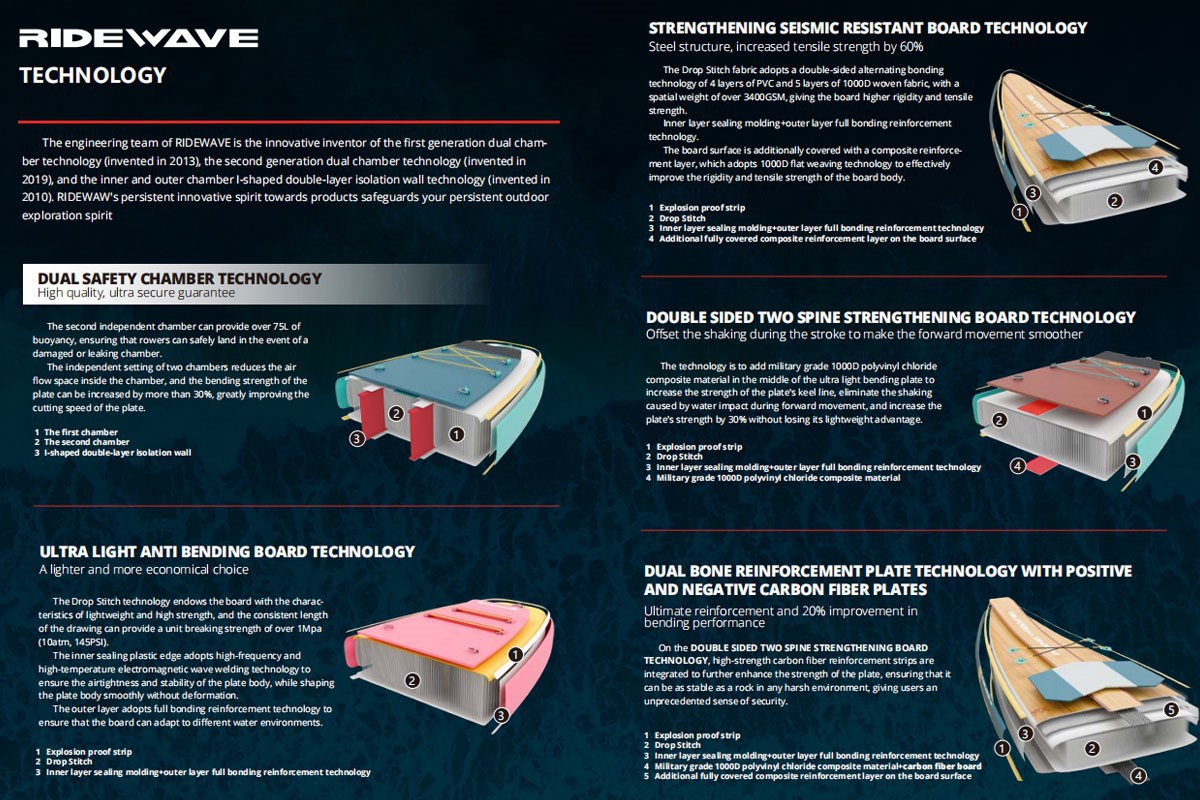
Modern paddle board production has reached new levels of strength, safety, and consistency:
Dual-Chamber Technology: First introduced by Ridewave in 2013 and upgraded in 2019, this breakthrough design adds a second air chamber inside the board, providing better pressure stability and higher safety. If one chamber is punctured, the other still keeps the board afloat.
Reinforced Rail Layers: Using next-generation heat-bonding technology, Ridewave adds extra PVC layers on the sides (rails) without increasing board weight. This results in superior stiffness and durability during paddling.
I-Shaped Isolation Walls: This patented Ridewave design features an internal I-beam wall between chambers. It reduces bounce and flex, making the board feel more rigid-ideal for fitness, racing, or heavier riders.
Digital Design and Prototyping
Even small brands can now build custom boards without hiring large teams:
3D Modeling Software: Tools like CAD allow brands to view and edit the board shape, deck design, and logo placement in real time. You can experiment with different styles before finalizing.
Rapid Prototyping: Ridewave offers a fast prototype process. Within weeks, you can touch and test a real sample of your new design, allowing quick iterations before mass production.
Digital Asset Libraries: From fonts to icons, today's asset libraries make it easy to generate user manuals, packaging, and even brand kits-all without a full-time designer.
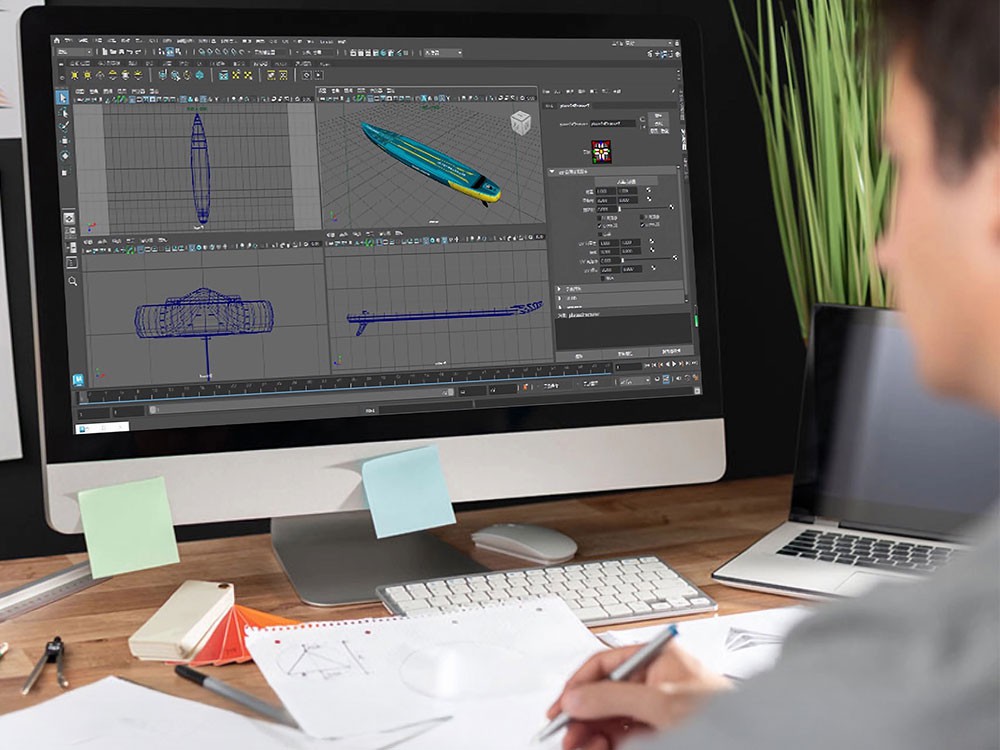
Ridewave Tip
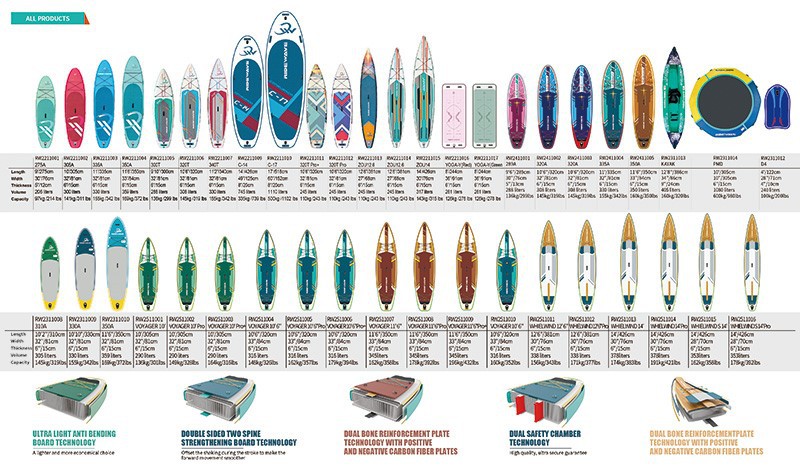
Use Ridewave's in-house design team to co-develop exclusive board styles that match your niche. With CAD and CNC precision tools, Ridewave can turn your idea into a real product within weeks. Whether you're designing a fitness board, yoga board, or eco-theme SUP, they'll bring it to life efficiently and accurately.
Startup Costs: Why 2025 Is the Perfect Year to Start Your Paddle Board Brand
Launching a paddle board brand may seem expensive, but in 2025, startup costs are surprisingly manageable. Many entrepreneurs begin with less than $10,000.
Cost breakd:
Sample development: $200–$400 per board
MOQ production (50 boards): $7,500–$12,000 depending on features
Branding and packaging: $1–$3 per board
Basic Shopify store setup: $300–$600
Marketing assets (photos, videos): Free with Ridewave partnership
You don't need to invest in large inventory up front. Start lean with a 50–100 board launch, validate your brand, then reinvest in volume orders.
Ridewave Tip: Use Ridewave's MOQ program to launch your brand with minimal risk. Ask about pre-packed accessory kits to improve customer value.
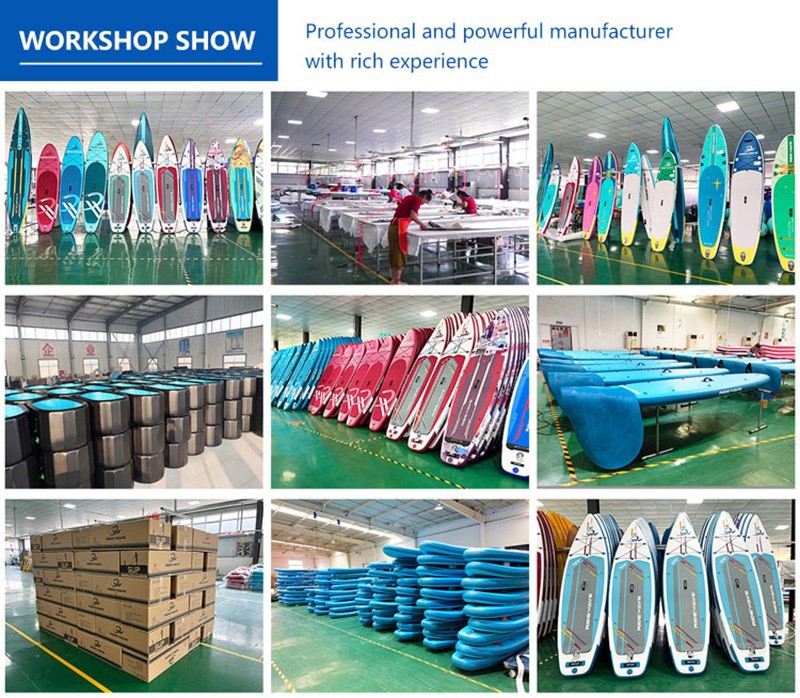
Ridewave Support: Why 2025 Is the Perfect Year to Start Your Paddle Board Brand
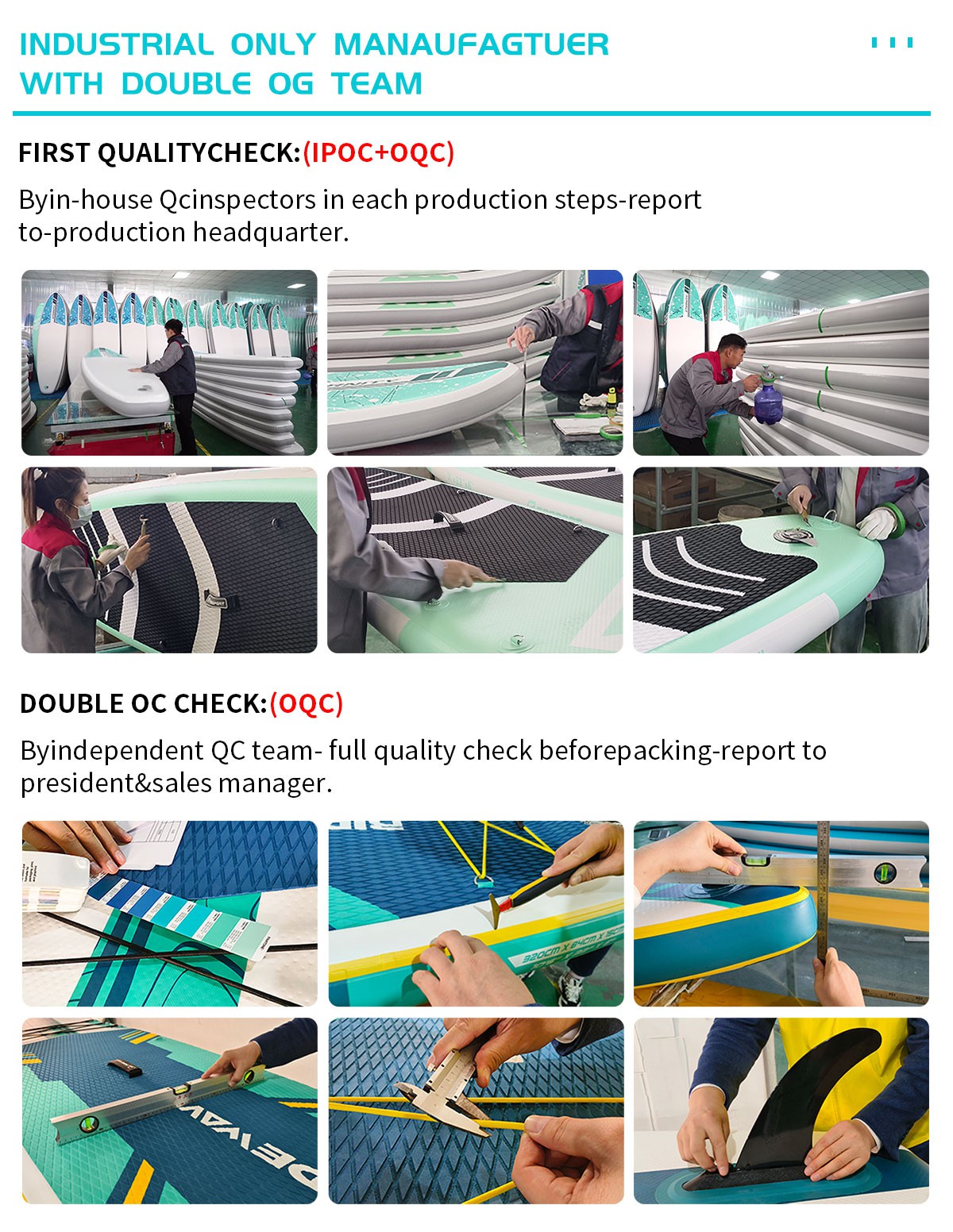
Having a trusted supplier is key to your success. Ridewave is not just a manufacturer-it's a full-service partner for new paddle board entrepreneurs.
Here's how Ridewave supports you:
Custom Design: Share your sketch, reference board, or concept idea-Ridewave will turn it into a detailed CAD design.
Sampling & Testing: Receive a prototype in 15–20 days. Test it, revise it, and approve for production.
Free Media Support: Get lifestyle photos, product shots, and videos ready for your website and ads.
Strict QC: Each board passes multiple quality checks including inflation, weight test, color match, and seam bonding.
After-Sales Support: If any customer reports issues, Ridewave will help assess and respond quickly.
Ridewave Tip: Ask about Ridewave's private label services-get your own branded packaging, manuals, and repair kits.
Final Tips: Why 2025 Is the Perfect Year to Start Your Paddle Board Brand
Before you jump in, follow these practical tips:
Define your niche: Know your target customer-adventurer, yogi, rental business, etc.
Keep your first launch small: Limit risk while learning.
Build a brand story: Customers buy into stories, not just products.
Partner smartly: Choose a factory that provides more than just manufacturing.
Think long-term: Your first season will teach you a lot. Use it as a foundation.
Ridewave Tip: Use your first launch to gather feedback. Ridewave offers design tweaks based on end-user responses.
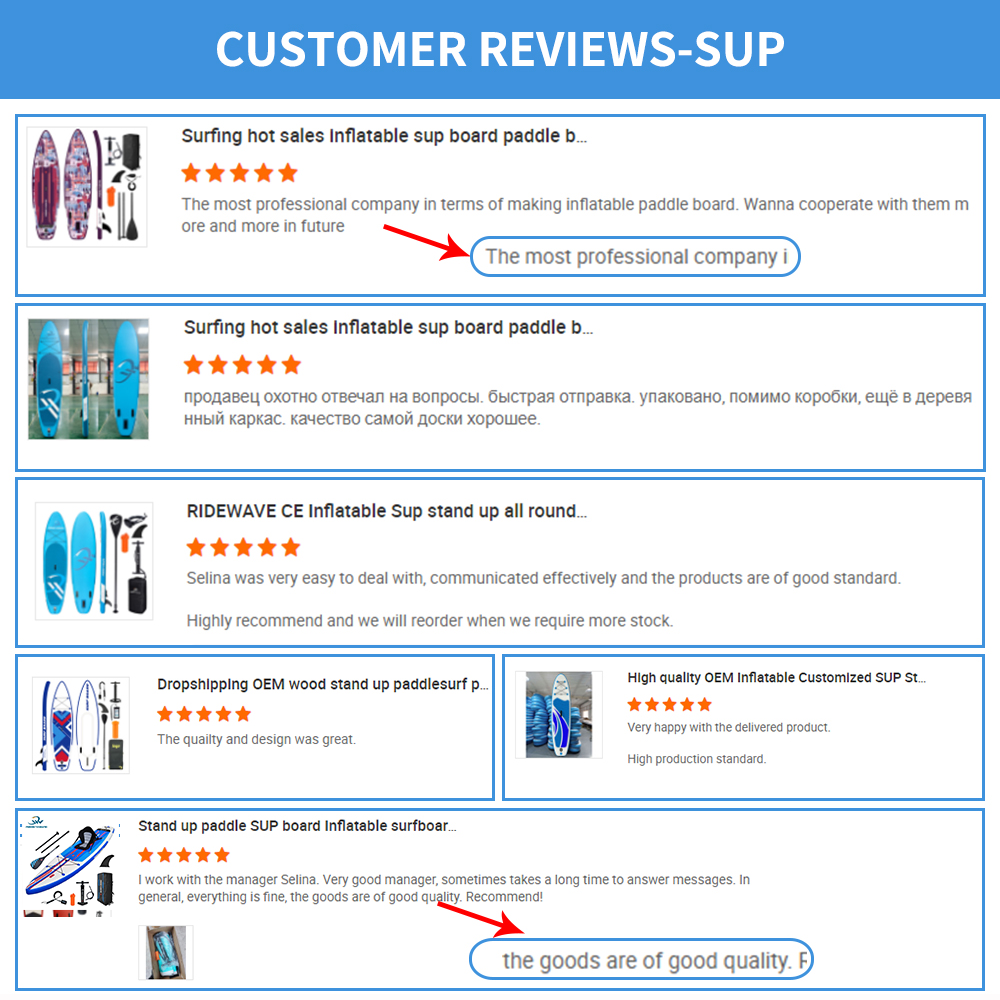
Everything is aligned in 2025-market growth, technology, supply chain reliability, and marketing channels. You don't need to wait for the perfect idea, budget, or timing. That time is now.
Ridewave is ready to help you build a paddle board brand that stands out and scales. Let's make waves together.
Explore More Resources
If you found this article helpful, check out these related blogs to guide your next steps:
1.[Top Features B2B Buyers Should Look for in a Paddle Boards Manufacturer]
2.[How to Build a Paddle Board Brand: The Ultimate B2B Success Roadmap]
3.[Common Mistakes to Avoid When Importing Paddle Boards from China]
4.[Why More Paddle Board Distributors Are Choosing Ridewave in 2025?]
5.[How to Choose the Right Paddle Boards for Your Rental Business]
Each article is designed to help you make informed decisions and grow your paddle board business with confidence. Whether you're just getting started or looking to scale, these insights will guide you along the way.


